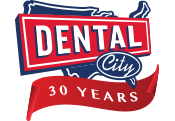
Did you know?
Customers put on hold with background music thought a 30-second hold was only 15 seconds.
The average on hold time across all industries is 38 seconds.
Callers stay on the phone 25% longer when there is a hold message versus just music or silence.
Most callers will hang up after 1 minute 55 seconds of hold time—and 34% won’t call back.
In an ideal world, every phone call in a dental office would be answered within the first ring and the person answering the call would be able to give that patient exactly what they needed. However, we all know that between the various patients coming in and out the door, questions to the front desk, billing transactions and more that this just isn’t possible. So what does that mean for your practice?
That it needs to handle putting patients “on hold” very carefully to ensure that you’re able to strike the best balance between caring for patients in the office and not turning away the patient on the phone.
Easy peasy, right?
The most effective way to keep a patient that’s been put on hold from turning into a patient that calls the practice down the street is do 1) do your best to minimize hold times and 2) make your hold message and music pleasant and personal. If you can do these two things you can prevent a small annoyance from becoming an easy way to lose potential patients.
Minimize hold times
To minimize hold times in your practice it’s important to have a strategy in place. This includes a “phone chain” made of team members who can answer the phone. For example, when a phone rings you might have one or two people whose primary job at the front desk—unless already helping a patient in person—is to answer that phone. Then if those initial phone answerers are unable to answer the phone you should have backup staff members who know that if a phone rings more than a specified number of times they should try to get to a phone as quickly as possible. This ensures you have at minimum three to four people who will try to answer that call right as it happens.
Craft a pleasant and engaging hold message
Even with the best of intentions patients will be put on hold. Thus, it’s essential that you take the time to craft an on hold message that won’t turn patients away. That means you don’t just pick the first hold music you find—or worse let patients listen to silence. Instead, provide a helpful message that makes patients feel a personal touch even when they’re not speaking with a person yet.
This message should consist of two main parts. First, you should immediately thank the patient for their patience and acknowledge that you know their time is precious. This can be as simple as “Thank you so much for waiting! We know you’re very busy and are working hard to get to your call.” What’s important with this message is that it sounds sincere and comes from a member of the dental practice staff—not an automated recording.
Second, if the on hold time continues don’t cut to music. Instead, use that time to further connect with the patient. An effective way to do this is to offer a special on hold promotion as a thank you for waiting. It can be something as simple as $10 off a whitening treatment or free x-rays at their next visit. By adding a personal incentive to the hold message you’re more likely to keep patients engaged and willing to wait until you answer. Plus, if the wait is short the team member who answers the phone can also offer the discount and use it to start to build a relationship with the patient. It’s a win-win for you both that can help your practice acquire more new patients.
No dental practice likes putting patients on hold. But sometimes it’s a necessary evil in a business that can go from calm to hectic in the blink of an eye. As long as you craft your on hold message to be an extension of your exceptional patient care you’ll minimize lost patients and maximize relationships.

